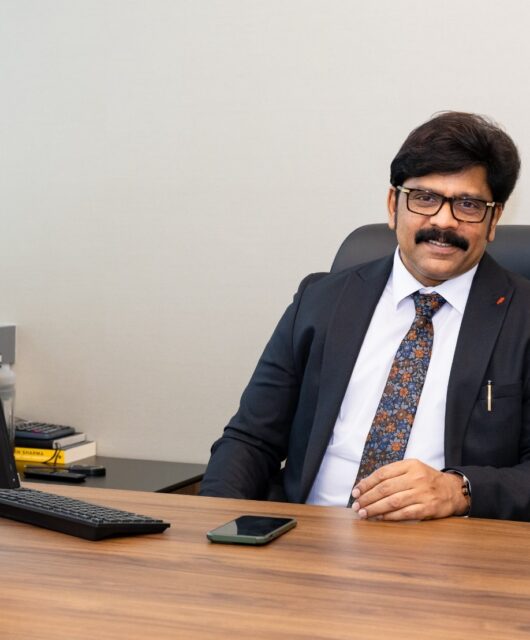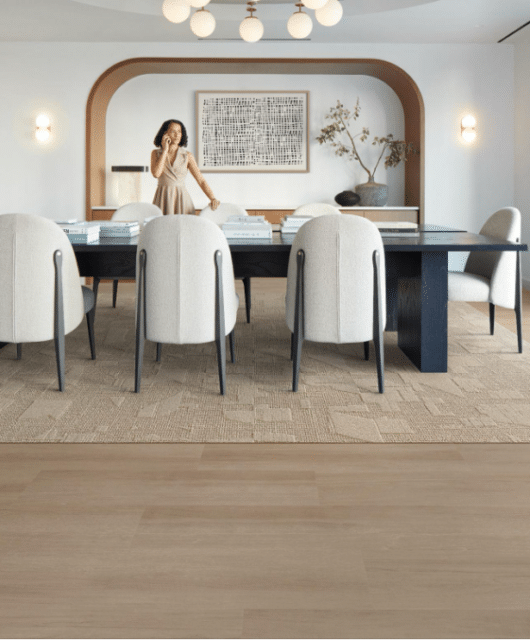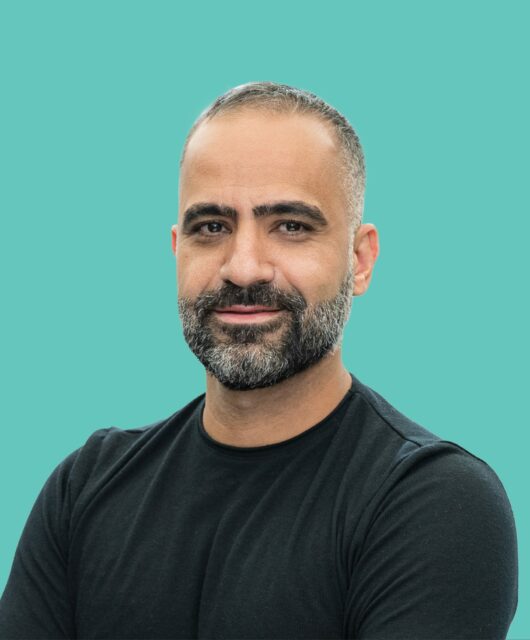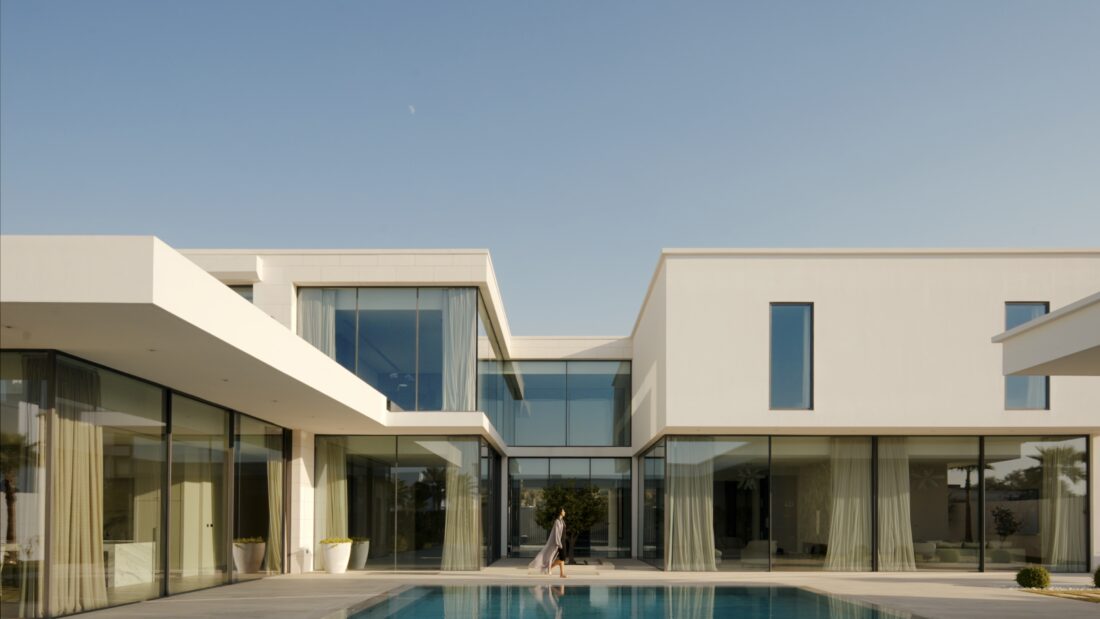 The Jasra House project in Bahrain by Salloum & Salloum Architects is all about quality of life and good design.
The Jasra House project in Bahrain by Salloum & Salloum Architects is all about quality of life and good design.
Jasra House in Bahrain is a beautiful and simple home property that takes you back to simplicity. The project by Salloum & Salloum Architects (S&S) provides its owners with a holistic experience. S&S is an award-winning, RIBA chartered, architecture and interior design studio with offices in Surrey (UK) and Bahrain.
 For the project, the customers inherited a block of land at a working farm in an area rich in wildlife and palm trees in Jasra, Kingdom of Bahrain; nevertheless, farming practises are declining in favour of more profitable industries such as development. The clients wanted to preserve as much of the landscape as possible to support the existing wild life and greenery, so any proposal had to support this brief, and any future house had to be connected to nature, and the proposal had to include a vegetable patch where the clients could grow their own produce.
For the project, the customers inherited a block of land at a working farm in an area rich in wildlife and palm trees in Jasra, Kingdom of Bahrain; nevertheless, farming practises are declining in favour of more profitable industries such as development. The clients wanted to preserve as much of the landscape as possible to support the existing wild life and greenery, so any proposal had to support this brief, and any future house had to be connected to nature, and the proposal had to include a vegetable patch where the clients could grow their own produce.
The design of the project started in 2017, and went on site in April 2019, and faced many delays due to COVID-19. The project was finally completed and occupied in November 2022, and therefore the villa has been occupied for one year.
The plot area was 4000sqm with the building having a BUA of 2100sqm out of which 700 sqm of that is for the basement. The total BUA area above ground is therefore 1400sqm with site coverage of approx. 35%. It is important to note that as per the planning regulations in Bahrain site coverage is allowed up to 55% however it was decided very early on that the owners wanted to not utilise the allowable coverage and to have more landscape than building.
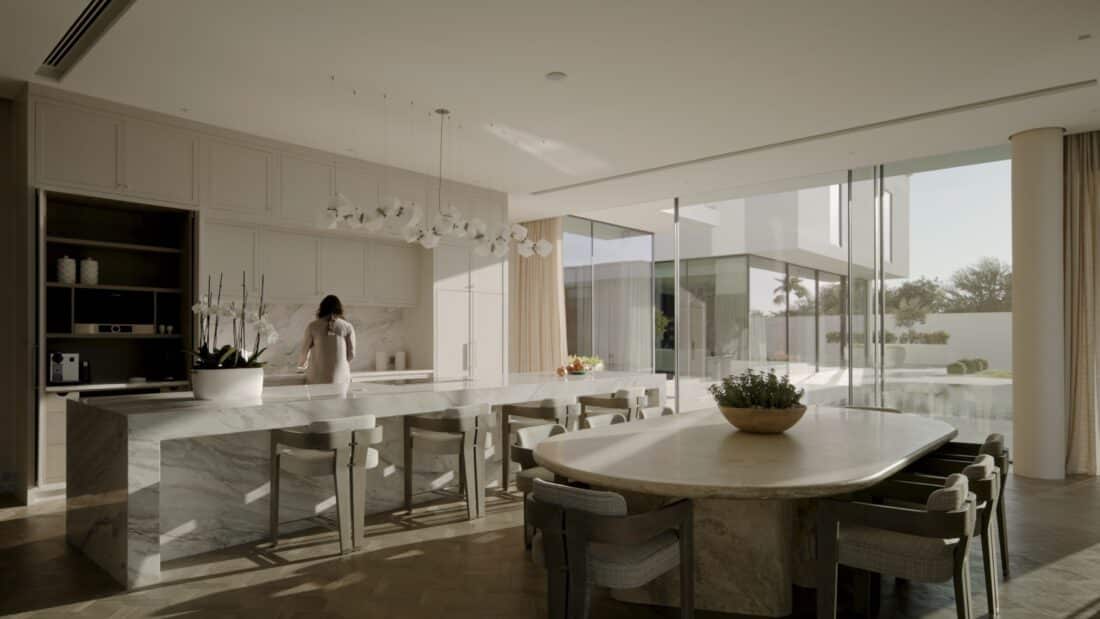 The concept of Jasra house was to create an architecturally inspirational piece of design carefully curated around the lifestyle of the clients. It is a culmination of a research driven piece of architecture meticulously detailed that borrows ideas from vernacular architecture in the Gulf re-interpreted by using contemporary ideas and living standards. S&S designed a villa with an open courtyard in the middle where every room with large glazed surfaces looks onto nature thus creating a catalyst for social engagement and an opportunity for the family to interact especially in a world where social media is slowly eroding the family unit.
The concept of Jasra house was to create an architecturally inspirational piece of design carefully curated around the lifestyle of the clients. It is a culmination of a research driven piece of architecture meticulously detailed that borrows ideas from vernacular architecture in the Gulf re-interpreted by using contemporary ideas and living standards. S&S designed a villa with an open courtyard in the middle where every room with large glazed surfaces looks onto nature thus creating a catalyst for social engagement and an opportunity for the family to interact especially in a world where social media is slowly eroding the family unit.
The site is in a region of Bahrain rich in agricultural history and greenery. S&S aimed to create a building that felt connected to nature by incorporating plants into the architecture and emphasising the historical significance of the site. They also addressed having a basement that held all of the services with the customer very early on, which meant that as much of the site could be left to be enjoyed as a planted space and to debate the rising cost of energy and water shortages.
One of the primary challenges was to find a suitable contractor that can deliver to such quality and workmanship and to understand the level of details and complexity that is required and a building that can meet the budget. The next challenge was to ensure that all M&E systems are designed to be hidden away from the naked eye and thirdly to find a glazing and aluminum system that can provide the height of 4m clear glazed surfaces and be able to slide and perform in the extreme temperatures in the Gulf with temperatures regularly reaching upto 49 degrees in the summer. S&S says that the clients were excellent to work with, they worked closely with their office and were very supportive of the overall design vision throughout the many challenges the project faced and remained committed throughout the process.
 The structure was designed in post tensioned concrete which meant there was an overall saving of about 20% in the use of reinforced concrete thus making the structure more environmentally conscious.
The structure was designed in post tensioned concrete which meant there was an overall saving of about 20% in the use of reinforced concrete thus making the structure more environmentally conscious.
The design studio collaborated closely with Otima, an aluminium and glazing system that performs at 4m heights, provides thermal efficiency in high temperatures, and allows maximum visibility while maintaining very slender profiles. The Otima team was really helpful and provided S&S with technical skills to help them reach the project’s overall objective. The glass also gave an opportunity and a sense of interconnectedness between the rooms and with nature.
The firm takes a unique approach to each project, paying close attention to details.The family dining table, for example, was designed by us to be constructed of travertine; the table was made by a specialist stone mason in Italy from a pre-selected block of marble and delivered to Bahrain; the table weight around one tone and had to be lifted into place by a specialist crane. These nuances take a long time to complete, but they make or break the project. This philosophy runs through everything they do at S&S architects.
One of the first decisions they made early on in this project was to create a basement to house all of the services, parking, and M&E equipment. They investigated the villa’s thermal performance and shading plan. The entire AC conditioning system is based on a VRF technology, which is more energy efficient and reduces electricity demand by 40%. The villas’ walls were well insulated, and open glass spaces were located away from or recessed from direct sunlight to reduce solar gain.
The team installed an RO plant to purify municipal water to drinking grade and S&S used the redundant water from the RO plant back to be used for the landscape. All other equipment such as the water tanks, pumps were located in the basement. This is unique in Bahrain, where mechanical equipment is frequently located on the top. The benefits of storing all of this equipment in the basement included having cold water in the summer months and having the equipment last longer, eliminating the need for maintenance and equipment replacement.
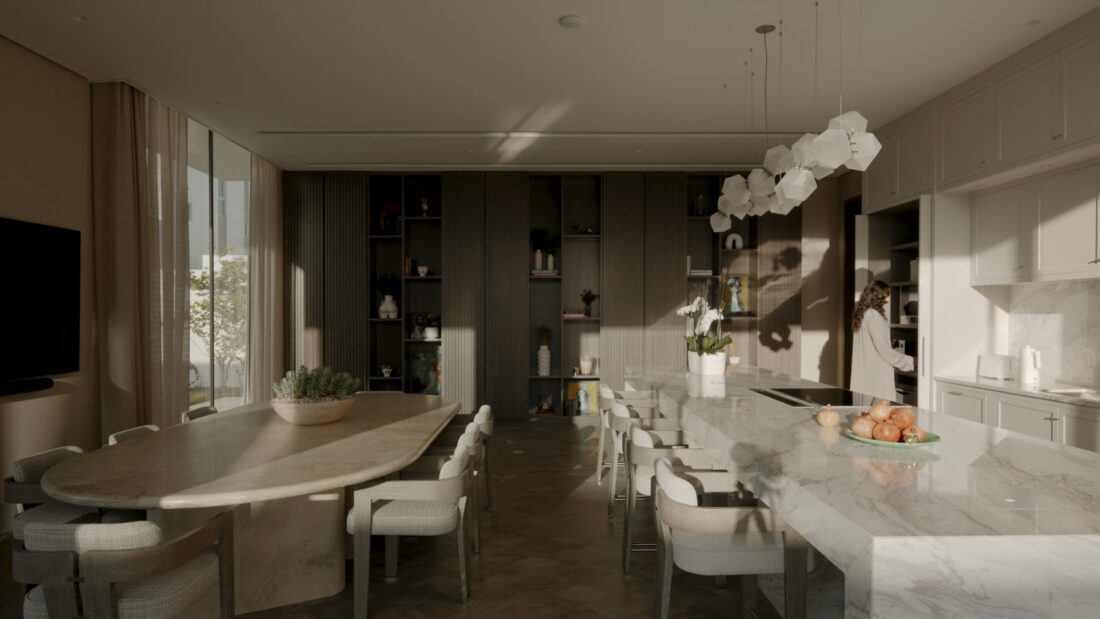 This structure highlights how good design can have a positive impact on how good residential architecture can be. It has certainly had a very positive impact on the clients; they are quite delighted to live in the house and can observe firsthand how smart design can improve one’s outlook. Also, this piece of architecture has taught other designers that there is a chance to create design-led architecture.
This structure highlights how good design can have a positive impact on how good residential architecture can be. It has certainly had a very positive impact on the clients; they are quite delighted to live in the house and can observe firsthand how smart design can improve one’s outlook. Also, this piece of architecture has taught other designers that there is a chance to create design-led architecture.

